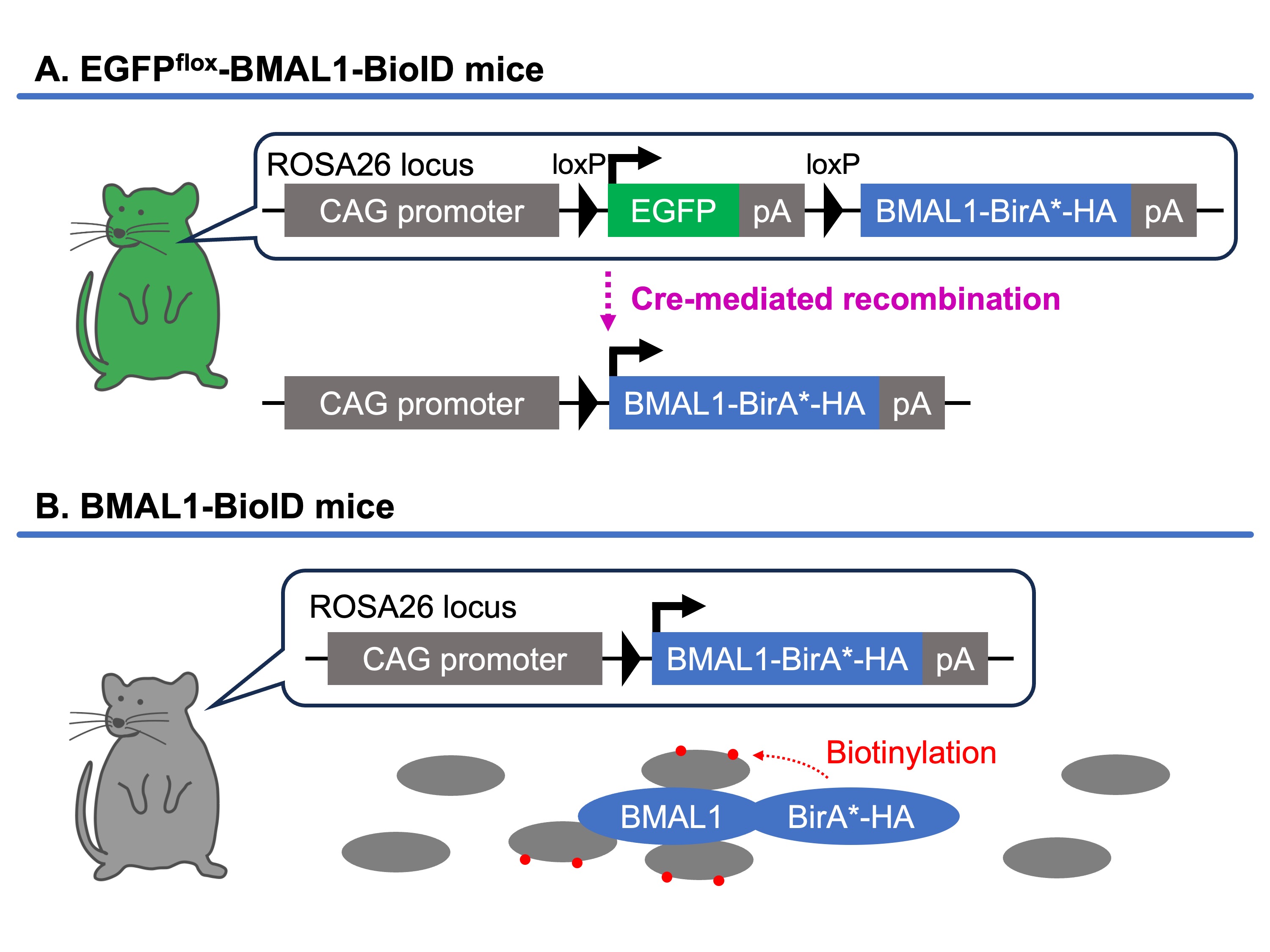 |
December 2024 Mouse of the Month |
|
In vivo BioID mice for analyzing protein-protein interactions C57BL/6J-Gt(ROSA)26Sor<em1(floxed-EGFP-Arntl-BirA<*>)Murk> (RBRC12179)
|
|
| Proximity-dependent biotin identification (BioID) is a method to comprehensively analyze the interacting protein for a target protein. In contrast to conventional approaches such as coimmunoprecipitation, pull-down assay, tandem affinity purification, BioID enables the identification of not only directly interacting proteins but also transient weak binding factors and complex factors of poorly soluble complexes, which were previously difficult to detect. Depositor (Dr. Murata) and his colleagues generated BioID knock-in mice of Brain and Muscle ARNT1-Like 1 (BMAL1) protein and BirA biotin ligase with the R118G mutation (BirA*) [1]. Bmal1 is known as the clock gene. BMAL1 protein forms a heterodimer with CLOCK protein in the nucleus, which activates transcription of genes related to circadian rhythms. EGFPflox-BMAL1-BioID (RBRC12179) mice express the green fluorescent protein EGFP in the absence of Cre recombinase and the BMAL1-BirA*-HA fusion protein after recombination with Cre recombinase. BMAL1-BioID (RBRC12180) mice express the BMAL1-BirA*-HA fusion protein under the control of the endogenous ROSA26 gene promoter and the exogenous CAG promoter. They generated mouse embryonic fibroblasts (MEFs) from these strains and confirmed that biotin labeling occurred as predicted. They also confirmed that high-biotin diet feeding induced protein biotinylation noninvasively in vivo. These strains are useful for the analysis of protein interactors of BMAL1. In addition, the in vivo BioID system is applicable to a variety of targets and is expected to be used for future developmental applications. |
| Keywords | : | in vivo BioID, biotin labeling, protein-protein interaction, circadian rhythm, high-biotin diet | |
| Depositor | : | Kazuya Murata, Ph.D. (University of Tsukuba at the time of the strain deposition) |
|
| Strain name | : | C57BL/6J-Gt(ROSA)26Sor<em1(floxed-EGFP-Arntl-BirA<*>)Murk> | |
| RBRC No. | : | RBRC12179 | |
| Strain name | : | C57BL/6J-Gt(ROSA)26Sor<em1.1(floxed-EGFP-Arntl-BirA<*>)Murk> | |
| RBRC No. | : | RBRC12180 | |
| Reference | : | [1] | Murata K, Mimura A, Suzuki H, Mikami N, Hamada Y, Kato K, Iki N, Ishida M, Daitoku Y, Tanimoto Y, Okiyoneda T, Fujiyama T, Dinh TTH, Mizuno S, Sugiyama F. Efficient induction of proximity-dependent labelling by biotin feeding in BMAL1-BioID knock-in mice. J Biochem. 2021 Dec 4;170(4):453-461. |
| Decenber 2024 Saori Mizuno, Ph.D. Contact: Experimental Animal Division, RIKEN BioResource Research Center (animal.brc@riken.jp) All materials contained on this site may not be reproduced, distributed, displayed, published or broadcast without the prior permission of the owner of that content. |





